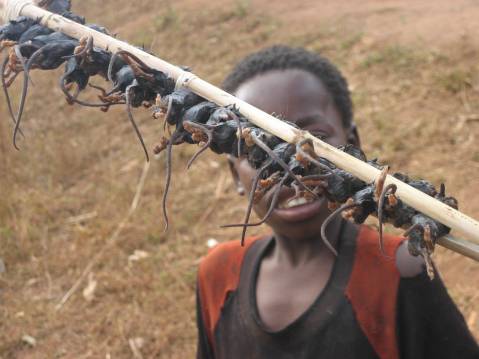Monday lunch time - I wondered - is my Cashew Chicken still edible? I invoked a six part testing strategy, which, later, it occurred to me would work well while in Malawi:
Step One: Visual inspection - nothing appeared amiss with my Cashew Chicken - no off-putting mottling, for example
Step Two: Sniff test - no foul trace odors
Step Three: Nibble test - I had a small bite of chicken, assuming that the chicken would be the dish's weakest link - seemed to taste OK
Step Four: Meaningful pause - I waited for a few moments to see if my stomach would up and rebel against the nibble test. Seemed OK.
Step Five: Lunch - having established the apparent safety of my Cashew Chicken, I proceeded to eat it, noting, in passing, the rather mushy texture of the noodles and cashews - neither of which appeared to fare as well as the surprisingly resilient chicken
Step Six: The Day After - no ill effects - apparently you can walk away from Cashew Chicken leftovers for three or four days and then consume without danger, if you are willing to overlook its textural shortcomings - and you have my high level of intestinal fortitude
So I ask myself, will I be able to follow this plan when faced with the prospect of trying some of Malawi's native snacks?
Note: I am known for adventurous eating, which has included turtle, beaver, bear, and, during a lamentable university stunt, two wizened and dusty flies from my dorm room's windowsill.
I have read that in a country where famine is common place, it is considered rude to turn down food. Luckily this strategy fits in well with my over-active appetite. But I wonder - how do I feel about eating, for example, insects? I'll admit that my insectivorian days began and ended with those two flies. Nevertheless, I have been captivated by the idea of sampling:
1. Fried White Ants - These have been compared to popcorn, when cooked. To make these at home, you will need:
1 cup day-old white ants (these are large termites, in the winged stage)
½ cup water
2 Tbs. margarine (you could probably substitute butter)
salt to taste
½ cup water
2 Tbs. margarine (you could probably substitute butter)
salt to taste
- Clean ants by removing wings and any foreign matter.
- Place insects in salted water and boil over high heat until water has evaporated.
- Reduce heat and add margarine (or butter!)
- Cover and simmer for 3 minutes.
- Remove from heat and serve immediately.
Likelihood of me eating these if offered - Medium High
2. Caterpillar Skins - a popular snack. Every November, the national parks are opened up so people can gather caterpillars. The innards are scooped out, and the skins sun-dried and salted.
Likelihood of me eating these if offered - High (Could they be any worse than, say, Pringles?)
3. Mice - I have already been warned off this roadside treat, by Bill's mother-in-law's Irish cousin, Joyce, who went on a mission trip to Malawi earlier this year. Yet these are considered a local delicacy. Here's a photo:

I can't figure out if the pictures I've seen, all of which resemble this one, are showing the mice ready-to-eat, or freshly caught. I am guessing the former. I have heard they are juicy. I also recall that Farley Mowat ate mice while up north, researching wolves, and even came up with a recipe for "souris a la creme" (Mice in cream). Since his chief ingredient appeared to be alcohol, I'm not sure he's a good spokesperson for the culinary possibilities of mice. Still, as my Whitefish Bay friend Irene Harper was fond of saying, "What doesn't kill, fattens."
Likelihood of me eating these if offered - Medium low
Generally speaking though, according to this article, most of the food will be familiar and palatable. Still, what if I develop a fondness for these exclusively Malawian delicacies - what then?
No comments:
Post a Comment